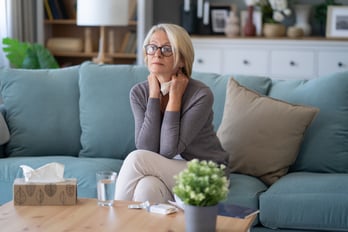 Imagine a full exercise class, residents upbeat and ready to start, a packed schedule of personal training clients, or hallway conversations about how good the residents feel after exercising. I say imagine because during the cold months, these things aren’t always a reality.
Imagine a full exercise class, residents upbeat and ready to start, a packed schedule of personal training clients, or hallway conversations about how good the residents feel after exercising. I say imagine because during the cold months, these things aren’t always a reality.
There are many reasons why our group fitness classes have lower participation, why our personal training clients keep pushing off their session until next week, and why we don’t have as many conversations with seniors about feeling well and full of energy. As staff, we need to be prepared for these seasonal shifts and adjust as needed. Seasonal Affective Disorder can play a huge role in the lack of resident participation and engagement in the fitness center. Here are some tips that staff can implement to keep senior residents active.
Tip #1: Change the group fitness schedule.
NIFS staff collect data on class participation, and we use this data to enhance our group fitness calendar seasonally. If you know it’s too cold outside to continue your outdoor walking class, change it to a gym circuit class. You can entice those residents to take the new circuit class by incorporating use of the treadmill or other cardio equipment, along with strength machines and usage of the non-typical group fitness class equipment.
Take note that in the New Year it's great time to trial a new class with the uptick in New Year’s Resolutioners. Use that feedback to adapt and keep the excitement going through the next few months.
Tip #2: Call the residents or send them a personal note.
You know who the regulars are and when they come to the fitness center. Haven’t seen them for a week? Call them or send them a personal note that you miss them and would like to meet for a consultation to see if they need any assistance adjusting their personal fitness routine. This act of kindness goes a long way in keeping seniors engaged and staying active.
Consider creating a few handouts, such as balance and no-equipment total body workout, that can be given to residents who are struggling to come to the fitness center but are open to exercising in the comfort of their own home.
Tip #3: Run a wellness program or presentation and incorporate SAD facts and management techniques.
During the winter months, it can be easy for people to dismiss their feelings. Maybe they think they are tired after being busy decorating and baking and going to all of the social functions. But what about when the holiday rush is over? It is up to community and fitness center to staff to not only engage residents to stay active, but to also consider their overall wellbeing. Following the holiday or winter season may be a great time to focus on wellness and highlight ways to manage Seasonal Affective Disorder or be a helping hand to someone who expresses SAD symptoms.
Consider hosting the presentation or wellness social and offering a giveaway for complementary personal training, to help residents get back into an exercise routine, or a complementary massage, to help residents relax and decompress.
Put these tips into action and see how small changes can make big impacts for the senior residents and fitness center engagement!


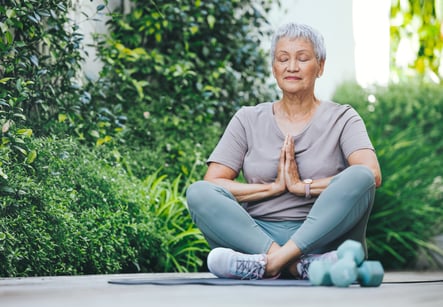 While most of us enjoy the hustle and bustle that comes with the season, we might find our lives accumulating stress. Sometimes we feel stress in the moment and sometimes it isn’t until the holidays have ended, and we feel the exhaustion set in. Thankfully in many senior living communities across the country, exercise and fitness professionals are including techniques in their group fitness or 1-1 programming that can be used to help with relaxation. Consider adding these in as part of your routine this season if holiday stress starts to wear you down!
While most of us enjoy the hustle and bustle that comes with the season, we might find our lives accumulating stress. Sometimes we feel stress in the moment and sometimes it isn’t until the holidays have ended, and we feel the exhaustion set in. Thankfully in many senior living communities across the country, exercise and fitness professionals are including techniques in their group fitness or 1-1 programming that can be used to help with relaxation. Consider adding these in as part of your routine this season if holiday stress starts to wear you down!
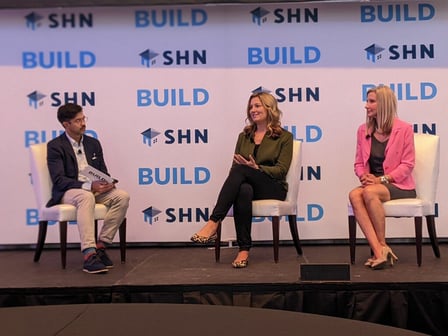 I had an opportunity to speak as a panelist at the
I had an opportunity to speak as a panelist at the 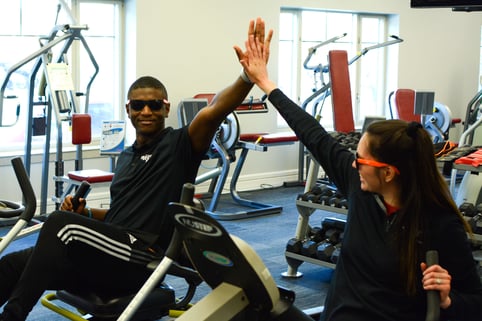 We have talked about the
We have talked about the 
.jpg?width=485&height=372&name=Nustep%20(1).jpg) The NuStep is a great multifunctional piece of equipment. Did you know the NuStep can be used for more than just building endurance? You can build strength, cardio, AND endurance depending how you use it. This is what makes the
The NuStep is a great multifunctional piece of equipment. Did you know the NuStep can be used for more than just building endurance? You can build strength, cardio, AND endurance depending how you use it. This is what makes the .png?width=343&height=287&name=PUMP%20IT%20FOR%20PARKINSONS%20SOCIAL%20(11).png) When designing a senior living fitness center, there are many factors that aid in the decision process when choosing equipment for our clients and their residents. We want to incorporate equipment that is cost effective, easy to move, applicable and safe for many individuals, and of course enjoyable. Here are five reasons why the
When designing a senior living fitness center, there are many factors that aid in the decision process when choosing equipment for our clients and their residents. We want to incorporate equipment that is cost effective, easy to move, applicable and safe for many individuals, and of course enjoyable. Here are five reasons why the  When thoughtfully planned and executed well, there are a variety of opportunities to generate revenue out of robust health and fitness programs in senior living communities. But you might be thinking, “I didn’t realize there was ANY revenue potential."
When thoughtfully planned and executed well, there are a variety of opportunities to generate revenue out of robust health and fitness programs in senior living communities. But you might be thinking, “I didn’t realize there was ANY revenue potential."
.jpg?width=434&name=GettyImages-1161759077%20(1).jpg) When we’re talking about whole-person well-being, it isn’t just the health care options available, or the fitness program offerings. Communities should be cautious about how narrowly they define “wellness” when connecting it to their physical spaces or services. This can have a significant impact in the messaging of your community culture to your residents and prospective residents. Supporting resident well-being should flow through every nook, cranny, department, and service under your roof; however, many communities miss opportunities because they want the word “wellness” labeled on a space or department.
When we’re talking about whole-person well-being, it isn’t just the health care options available, or the fitness program offerings. Communities should be cautious about how narrowly they define “wellness” when connecting it to their physical spaces or services. This can have a significant impact in the messaging of your community culture to your residents and prospective residents. Supporting resident well-being should flow through every nook, cranny, department, and service under your roof; however, many communities miss opportunities because they want the word “wellness” labeled on a space or department.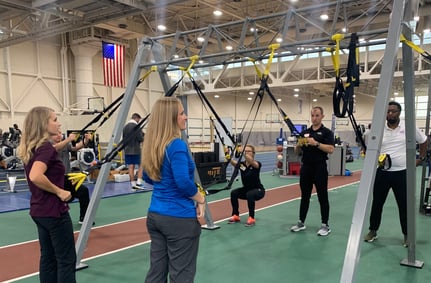 Variety is the spice of life, and that’s what we’ll have in town this week at our annual managers’ meeting. Each year we fly our management team to our headquarters in Indianapolis for professional development, collaboration, and networking. Our passionate team arrives from across the U.S. from different client settings and with varying personal interests and backgrounds. Their one commonality is their passion for serving their members, and we love the dialogue and collaboration that unfold when everyone gets together.
Variety is the spice of life, and that’s what we’ll have in town this week at our annual managers’ meeting. Each year we fly our management team to our headquarters in Indianapolis for professional development, collaboration, and networking. Our passionate team arrives from across the U.S. from different client settings and with varying personal interests and backgrounds. Their one commonality is their passion for serving their members, and we love the dialogue and collaboration that unfold when everyone gets together.
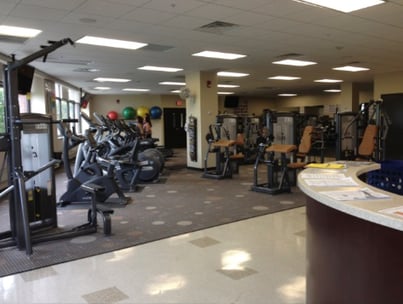 This has been the year of design and consulting work for senior living clients who are renovating or building new fitness centers. I think I could give you the dimensions of a NuStep T4r model in my sleep (they are 60 x 27 x 24 inches, by the way). It truly is exciting to see the industry dedicating resources to well-designed fitness spaces to support quality programs and services for residents.
This has been the year of design and consulting work for senior living clients who are renovating or building new fitness centers. I think I could give you the dimensions of a NuStep T4r model in my sleep (they are 60 x 27 x 24 inches, by the way). It truly is exciting to see the industry dedicating resources to well-designed fitness spaces to support quality programs and services for residents.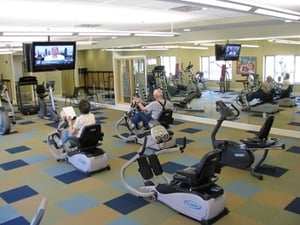 Televisions and entertainment: Determine whether you will pursue wall-mount televisions or the integrated console option on the cardio machines. With some equipment like NuSteps and rowers not having the integrated TV option, you will want a wall-mount TV somewhere in your facility. With wall-mount TVs you’ll have to navigate the channel wars for the lifelong battle between Fox News, CNN, and MSNBC, which individuals have VERY strong preferences for—imagine that! Consider an FM tuner option with headphones if needed, but we generally see residents politely following the first-come, first-served rule.
Televisions and entertainment: Determine whether you will pursue wall-mount televisions or the integrated console option on the cardio machines. With some equipment like NuSteps and rowers not having the integrated TV option, you will want a wall-mount TV somewhere in your facility. With wall-mount TVs you’ll have to navigate the channel wars for the lifelong battle between Fox News, CNN, and MSNBC, which individuals have VERY strong preferences for—imagine that! Consider an FM tuner option with headphones if needed, but we generally see residents politely following the first-come, first-served rule.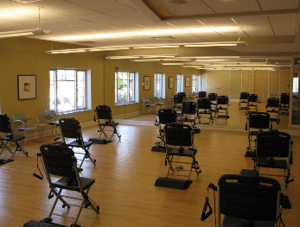 Exercise chairs: We are big fans of the
Exercise chairs: We are big fans of the